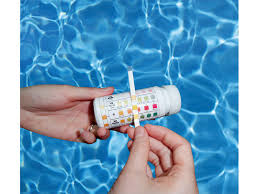
It is still hot out and with the Farmer’s Almanac predicting it to stay warm well into October, there is still plenty of time to use your pool! With school activities starting, we know chemical balancing is probably the last thing on your mind so we have tried to simplify it just a bit and give some tips on the 3 most important readings to look for.
Alkalinity
Alkalinity is the measure of the water’s ability to resist changes in pH. Why so much emphasis on this, you ask? Alkalinity is a buffer to your pool’s pH and determines whether your pH will change slowly or quickly when chemicals are added. If your alkalinity is too high, you'll waste a lot of money and time on chemicals, trying to balance things. For this reason, alkalinity is the first thing to check when balancing your water. You can test your pool water in two ways: either with test strips or having your water tested at a local pool store that offers a water testing service.
pH
pH is the second most important thing to check while balancing your water. PH will show how acidic or alkaline your water is. A reading of 7.5 is good for the eyes, so try and keep your pH as close to this range as possible. If your pH is too high, your water can easily turn green and become cloudy. The higher the pH, the less likely your pool will hold much-needed metals. On the other hand, if your pH is too low, it can make your skin dry and itchy as the water becomes acidic. Acidic water also leads to larger maintenance issues like causing corrosion to any surface in your pool (i.e. vinyl, tile, fiberglass, etc).
Chlorine
Last is your chlorine level, which is the easiest. This is your sanitizer. Your chlorine level needs to stay between a 1 and 3. Lower than a 1 and green water could easily become your new unwanted best friend. Higher than a 5 could bring itchy skin and staining on your pool surface.
Hopefully, this helps simplify things a bit and keeps your pool looking crystal clear throughout the remainder of the summer!
- Kelly Caldwell









.png?width=263&name=May%20%20CL%20%20(1).png)